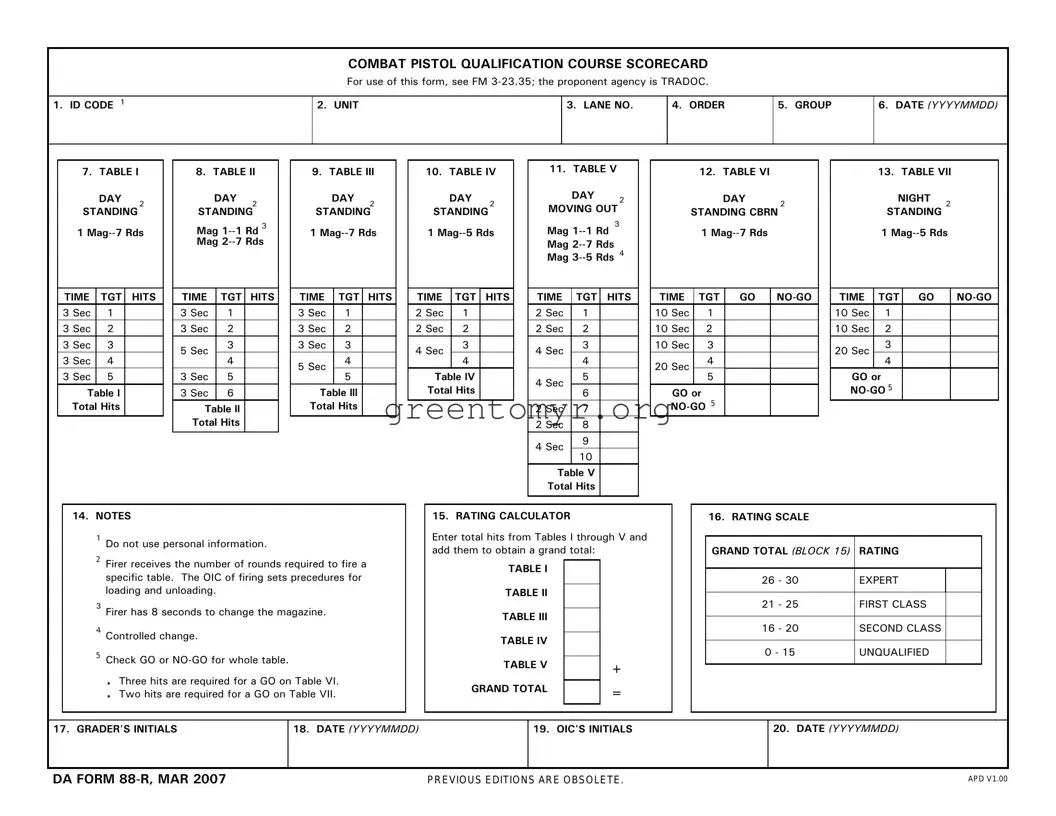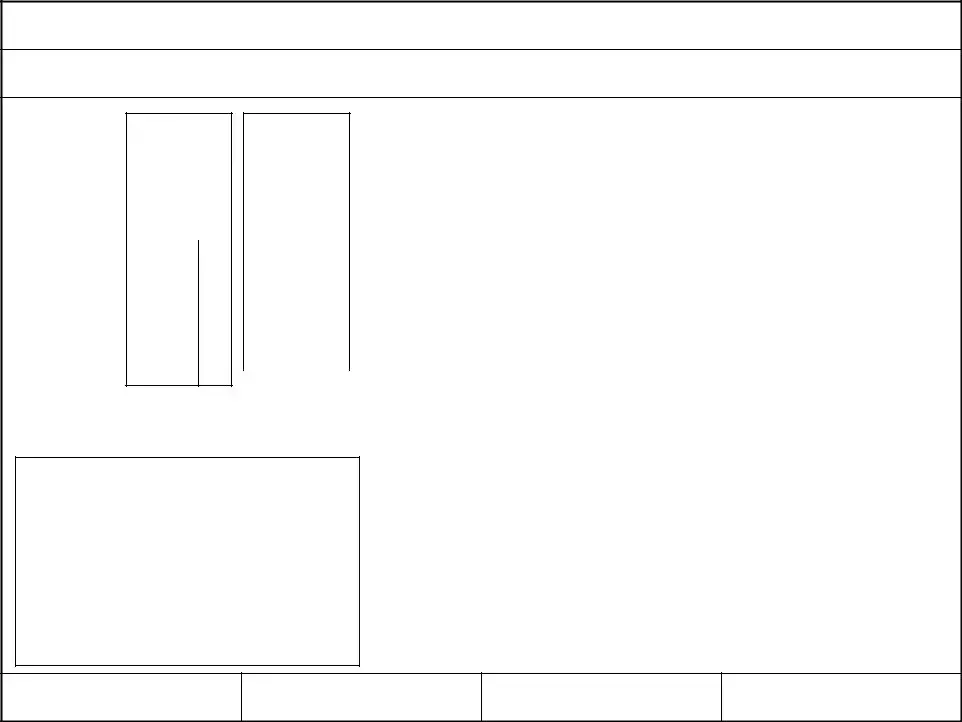When filling out the DA 88 R form, individuals often make critical mistakes that can affect their qualification outcome. One common error is failing to provide all required identification information. The form contains fields such as ID code, unit, and lane number that must be accurately completed. Omitting any of these details can lead to confusion and potential delays in processing the submission.
Another mistake is miscalculating the total hits in various tables. Each table has specific requirements for scoring, and it is essential to ensure that the total matches the criteria for qualification. For example, in Table I, a total of 30 hits could indicate an expert rating, while fewer hits may lower the rating significantly. Double-checking these numbers is crucial.
People frequently overlook the time constraints associated with each firing table. For instance, the form specifies specific times per engagement, such as 3 seconds for certain shots in Table I. Failing to adhere to these time limits can result in incorrect scoring or disqualification from the event.
Additionally, users often forget to indicate their scores as "GO" or "NO-GO" for the required tables. This is a vital part of the scoring process, as it determines whether the individual successfully completed the task. In Table VI, a minimum of three hits is necessary for a "GO," and incorrectly marking this can have serious implications.
Another common issue involves the rating calculator. Individuals might mistakenly add the scores from Tables I through V without ensuring they follow the correct procedure laid out in the form instructions. A simple arithmetic error can lead to a failure to qualify, so careful calculation is essential.
Complete and clear signatures are often overlooked. The form requires initials from the grader and the Officer in Charge (OIC), as well as the respective dates. Neglecting to include these signatures can render the evaluation invalid, as proper authorization is essential for verification.
People sometimes use personal information in sections where it explicitly states not to. This can pose a privacy issue, and following the guidelines is paramount for maintaining confidentiality and compliance with regulations.
Failing to follow the instructions for changing magazines can also be problematic. The form specifies that there is a controlled change process in which a firer has 8 seconds to swap magazines. Ignoring these details can lead to an incomplete qualification and might require re-evaluation.
Lastly, individuals often forget to include notes or comments where necessary. There are sections for notes that can clarify discrepancies or provide additional context about the firing exercise. This space can be valuable for addressing any concerns or questions that may arise during the scoring process.
Awareness of these common mistakes can facilitate a smoother experience when completing the DA 88 R form, ultimately leading to a more accurate assessment and successful qualification.

